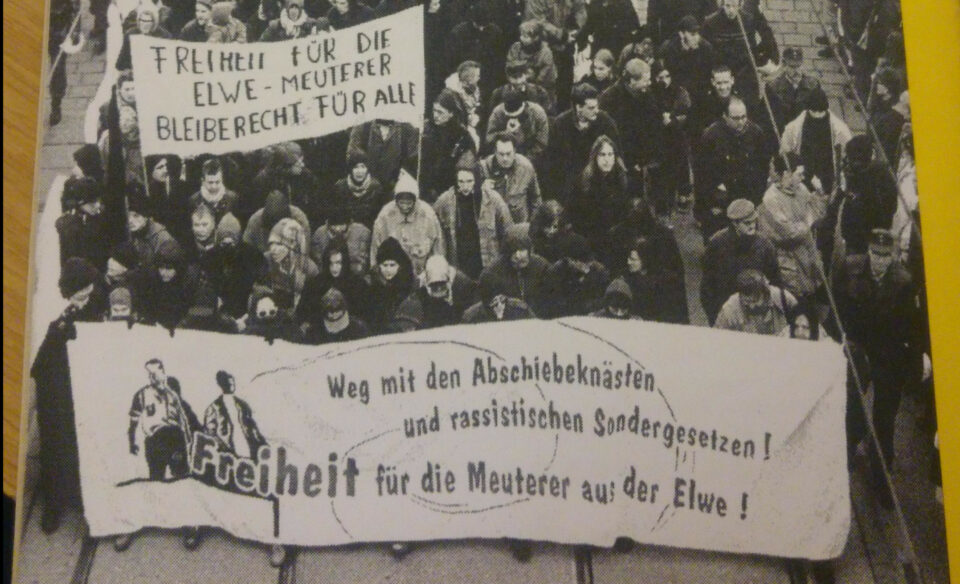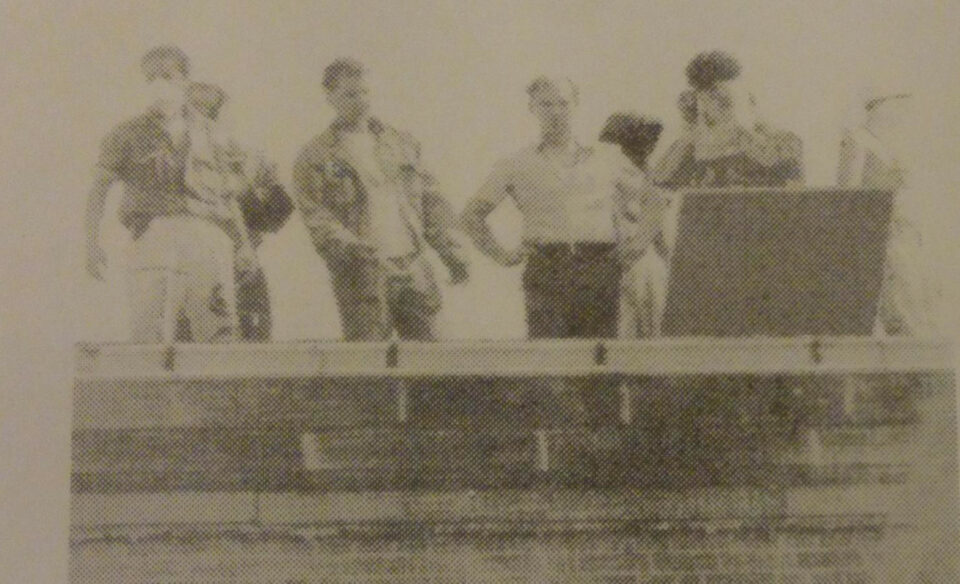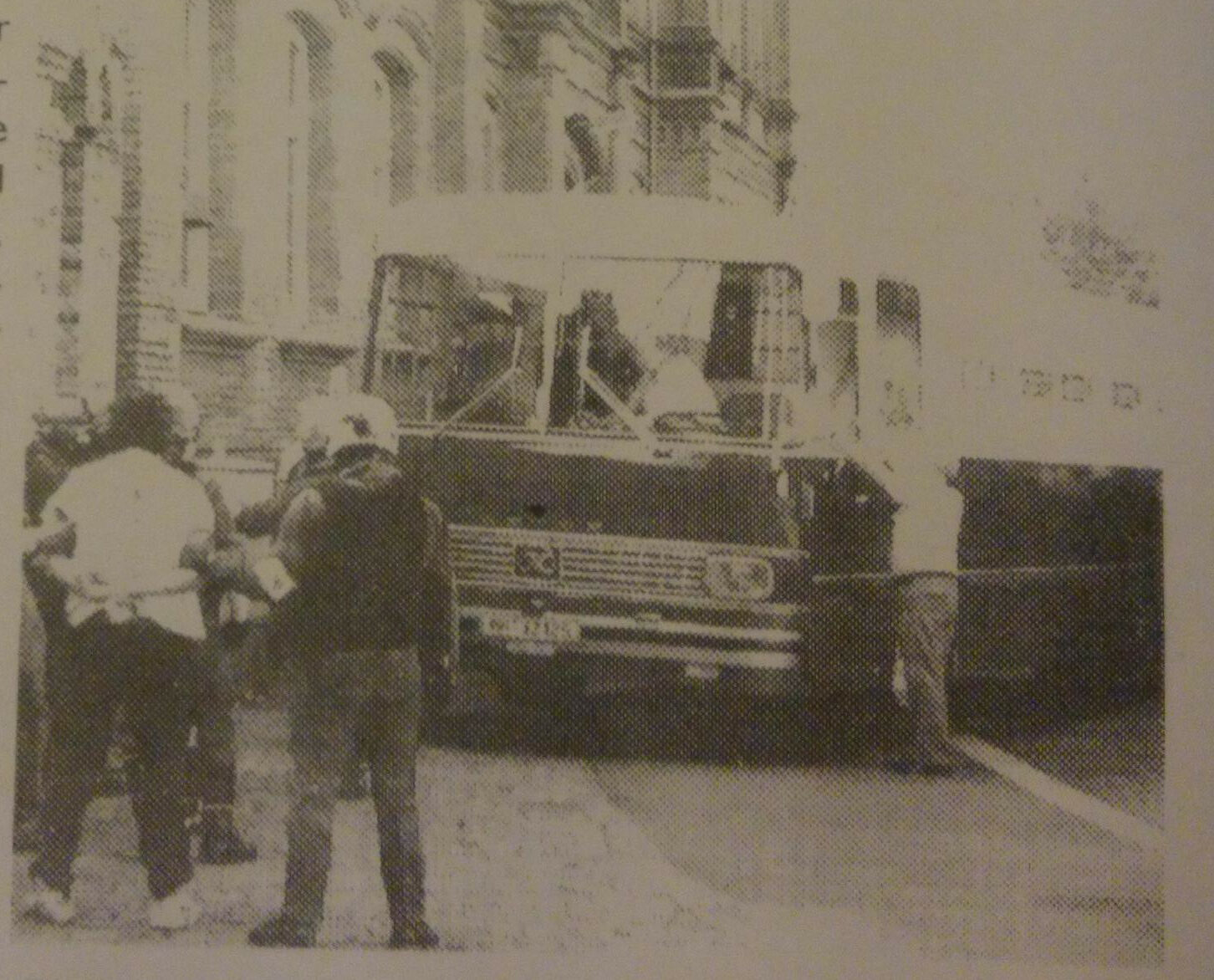Am 24.07. is the anniversary of the revolt from approx. 40 Deportation detainees in the Kassel JVA 'Elwe' for 27. Times. The revolting protesters protested against the threat of deportation and the disastrous conditions of detention. At the time, the uprising was part of a large number of attempts by asylum seekers, against the racist asylum- and to resist Germany's migration policy. A trial observation group documented what happened during and after the revolt.*

In the 1990s, the people in Kassel became, who the German state wanted to deport, in the JVA 'Elwe' in Leipziger Strasse 11 imprisoned together with U-prisoners. They often sat there for several months, sometimes even up to 1 ½ years a, until their deportation was completed. The abolition of the fundamental right to asylum 1993, which followed the racist mood in society, led to an intensified deportation practice, which was also implemented without compromise in Kassel. At the time, the 'Elwe' trial monitoring group reported on the prison conditions in its brochure*:
„23 Hours of confinement on the cell - partly. for six on 20 square meters with the toilet in a corner, only a small window, which can only be flipped, no work, no events, just 2 parcel stamps per year; racist sayings by JVA- servants. Letters of complaint are torn up when handed over...".
"Elves"- Trial Observation Group in their brochure
Am 24.07.1994 finally defended themselves against deportation detainees. After the free period, some deportees overpowered the warden, who was alone on the ward that Sunday morning. They took his bunch of keys from him and used them to unlock the rest of the cells. But the main gate could not be unlocked with the keys from the overseer's keychain.
Financial support: Freedom for deportees
Thereupon some of the rebels made up their minds, to take the warden hostage, to be able to make demands on the police and the judiciary. In the meantime, they had arrived in front of the building. The demands of the rebels to the police were: The deportation orders should be lifted and the rebels should be given the opportunity, to move to other European countries.
The rebels initially held the hostage in the medical room, but moved to the roof of the JVA in the afternoon, to advance the deadlocked negotiations. Shortly before, a fire had broken out in the Elwe's work wing. A large part of the files of the prisoners stored there also burned there.

Meanwhile, a demonstration formed in front of the prison, who supported the prisoners in their demands. For the rebels, the character of the demonstration was initially unclear, which created insecurities among them - but it soon became clear, that the demonstrators shared their demands. In the evening, however, the demonstration was crushed by the police and 11 people taken into custody.
Devastating police tactics
Negotiations between the rebels and the police dragged on all day and the rebels were unsuccessful. The police used a grueling negotiating tactic. The demands of the rebels were only addressed very late in terms of content, expected a considerable time delay and at the same time the rebels were not allowed a break in the negotiations.
Versus 3 o'clock in the morning the deportation detainees finally demanded because of hunger and overtiredness, a break in negotiations, which was rejected by the police. At the same time, the police evacuated fellow prisoners throughout the day, who distanced themselves from the revolt, and thus further and further reduced the number of people in prison. The rebels were isolated more and more.
This wearing down of the rebellious deportation prisoners finally led to this, that by early morning they had greatly reduced their demands: So they no longer demanded free withdrawal to other European countries, but only to be transferred from the JVA Kassel to another prison outside of Kassel. But they insisted, to speak to the press and a solidary lawyer, to draw public attention to the conditions and length of their detention. They should also be guaranteed humane treatment by the judiciary and police after the end of the uprising.
The uprising is crushed
Versus 8 In the morning the negotiations initially seemed to be over, because a bus was driven up to the rebels, who should bring her to the JVA Wiesbaden. At this point there were still 26 Insurgents in the Elwe, who then got on the bus. However, the GSG-9 unit stormed the bus shortly thereafter, ending the revolt 22 Hours.

While the local press in Kassel wrote of a "bloodless end" to the revolt, However, the reality of the rebellious detainees awaiting deportation looked different after the uprising was suppressed. After they were taken to the JVA Wehlheiden, the turnkeys there awaited them with clubs. This is what some of the rebels reported, other prisoners and the prison psychologist of the JVA Wehlheiden, like the incoming deportation detainees through an alley of 10 to 20 Turnkeys had to run and were hit with clubs and fists. Other detainees awaiting deportation were abused in the cells with batons and in the weeks after the uprising there were further attacks by prison guards on deportation detainees.
„With the systematic abuse immediately after the revolt, a racist justice system responded to an attack on itself.”
"Elves"- Trial Observation Group in their brochure
„In case of doubt against the accused”
In November and December 1994 the first trials against individual rebels began before various youth lay judges in Kassel. The investigation itself was riddled with contradictions. Some of the rebels were interrogated as witnesses and accused at the same time and accordingly contradicted in their teaching. Furthermore, at least one statement came, in which an accused also incriminated other fellow inmates, under the impression of the beatings by the turnkeys in the Wehlheiden prison. He revoked this in court.
The trial observation group writes about the selection of the accused:
„At the beginning of the revolt were over 40 Deportation detainees of different nationalities in the 'Elwe' - in the end there were still 26, not only Algerians. But it is obvious, that those Algerians, who were there until the end, were seen as the 'hard core' of the revolt and the judiciary according to the formula: Algerian + 'to the end' = hostage-taker "calculated""
"Elves"- Trial Observation Group in their brochure
In the end, twelve defendants were tried, eleven of them convicted. Two other defendants were deported before their trials began. One of them had been beaten up by the jailers in the Wehlheiden prison and had therefore filed a complaint. The processes were – as in previous investigations – marked by scandalous events. Among other things, there were some witnesses, which individual defendants could have exonerated, had already been deported before the trial began and the judge made no move, to allow, that they could testify in court.
In particular, the construction of the indictments was remarkable. The revolt of the deportation detainees could not be legally classified as a "prisoner mutiny"., because the rebels were not prisoners in the sense of the penal system. That's why the court tried it, the individual accused of individual criminal offenses such as e.g. theft, property damage, arson or resisting law enforcement officers.

The obviously contradictory statements of the turnkey formed the basis of this assignment, who was held hostage during the revolt. Because the files, that the defenders had at their disposal, were extremely incomplete and, above all, exculpatory statements from witnesses who had already been deported were not included in the files, the defense had no overview of the entire complex.
Furthermore, the accused were sentenced for individual crimes, although their participation in these could not be proven. An inmate example,was demonstrably no longer on site at the time of the alleged crimes, because he had already distanced himself from the revolt and left the JVA in the course of the evacuation. But because he is said to have incited the fellow prisoners to revolt, he was held accountable for the entire course of the uprising and 3 ½ year prison sentence.
In October 1995 became the last of these so-called “Elwe- Processes” completed. A recurring pattern, writes the process observation group, was then, that contradictions arising in the processes were interpreted to the detriment of the accused. The rule of law principle, “in doubt for the accused” so it didn't apply in this case.
And further?
The rebels had made it despite the failed uprising, that the intolerable prison conditions were discussed in public. Soon after, the first deportation prison in Offenbach was opened in Hesse, so that deportation detainees were no longer imprisoned in prison, but in prisons specially designed for detention pending deportation. In the future, the red-green government could always refer to the supposedly improved prison conditions in these prisons. The separation of prison and detention pending deportation is still a legally stipulated standard today. The trial observation group summarized the political dimension of what happened at the time as follows, which is certainly still valid today:
„Demand laws conceived in Germany, in pursuit of their own deportation, to collaborate in death and misery. The red-green concept gives refugees a choice: either you do something for it yourself, that you will quickly fall into the hands of your pursuers or - if you resist - you will feel like the prisoners in Kassel, like the prisoner in any other horror prison in the republic.”
"Elves’ Trial Observation Group in their brochure
That the rebels weren't just revolting against prison conditions, but with your request, that they are free to move abroad, resisted the system of deportations itself, should therefore not be forgotten.
* The almost 40-page brochure - the 'Elwe' process reader from May/June 1996 – can be viewed in the Archive of Social Movements in Hamburg.
